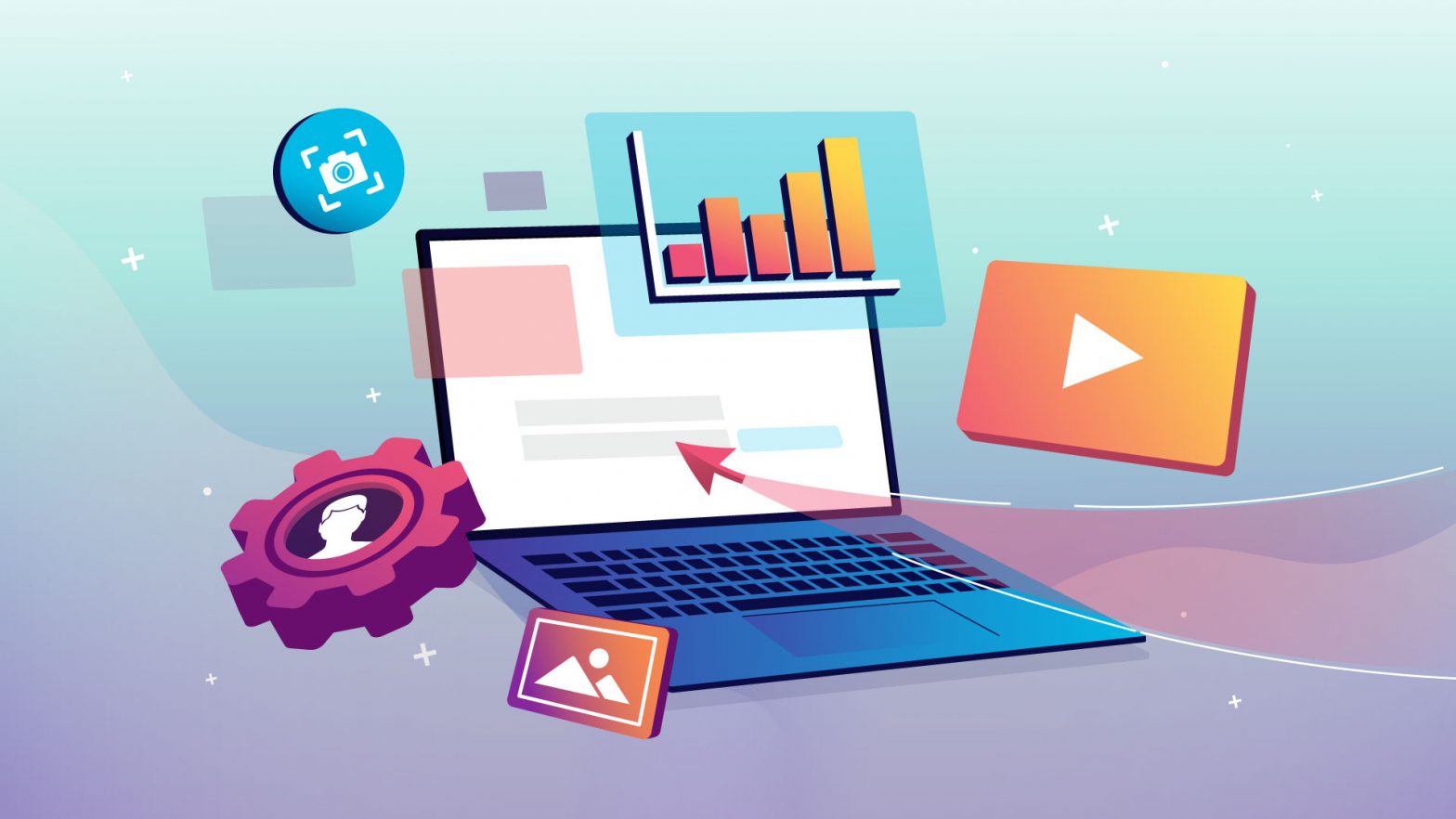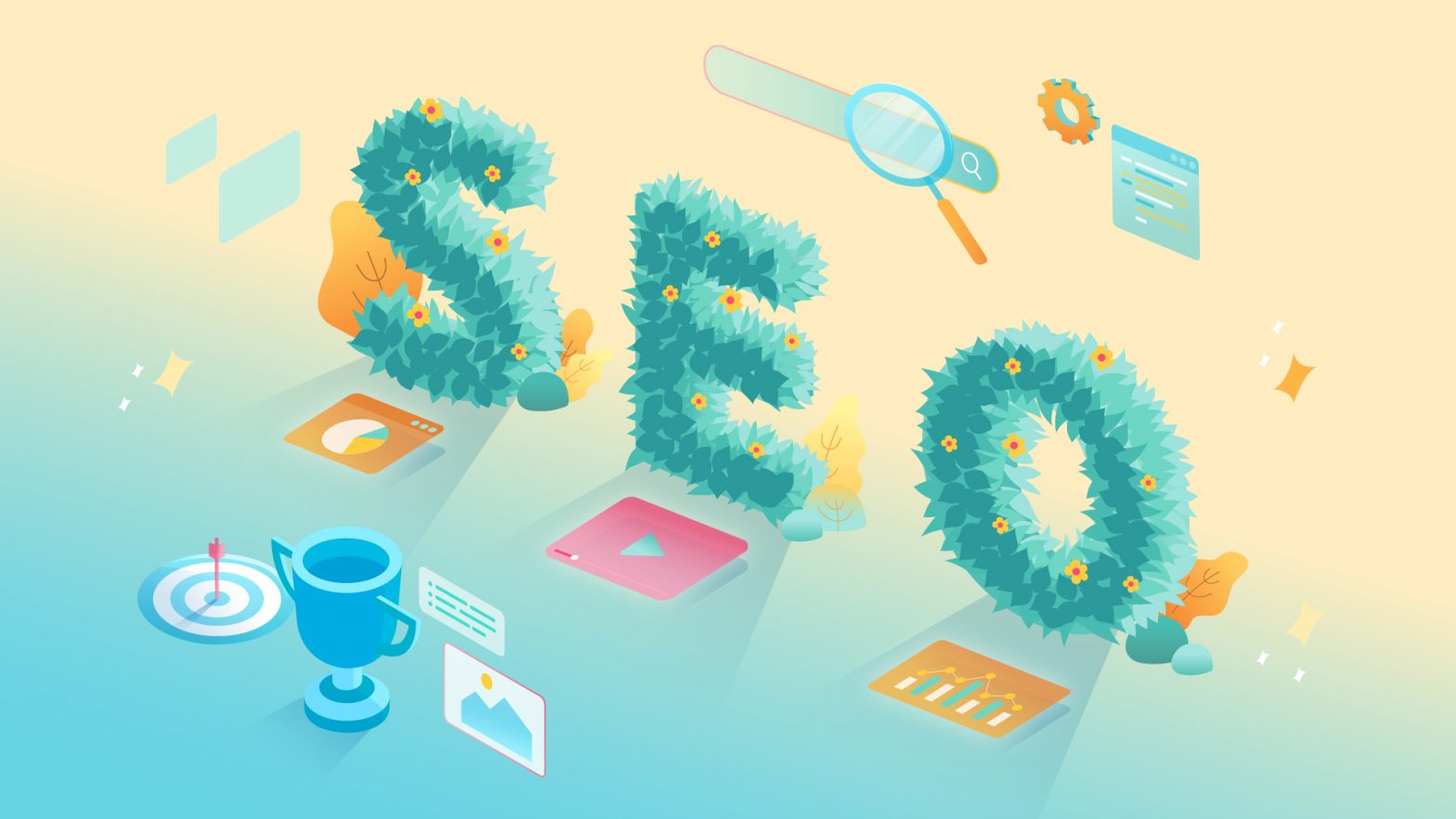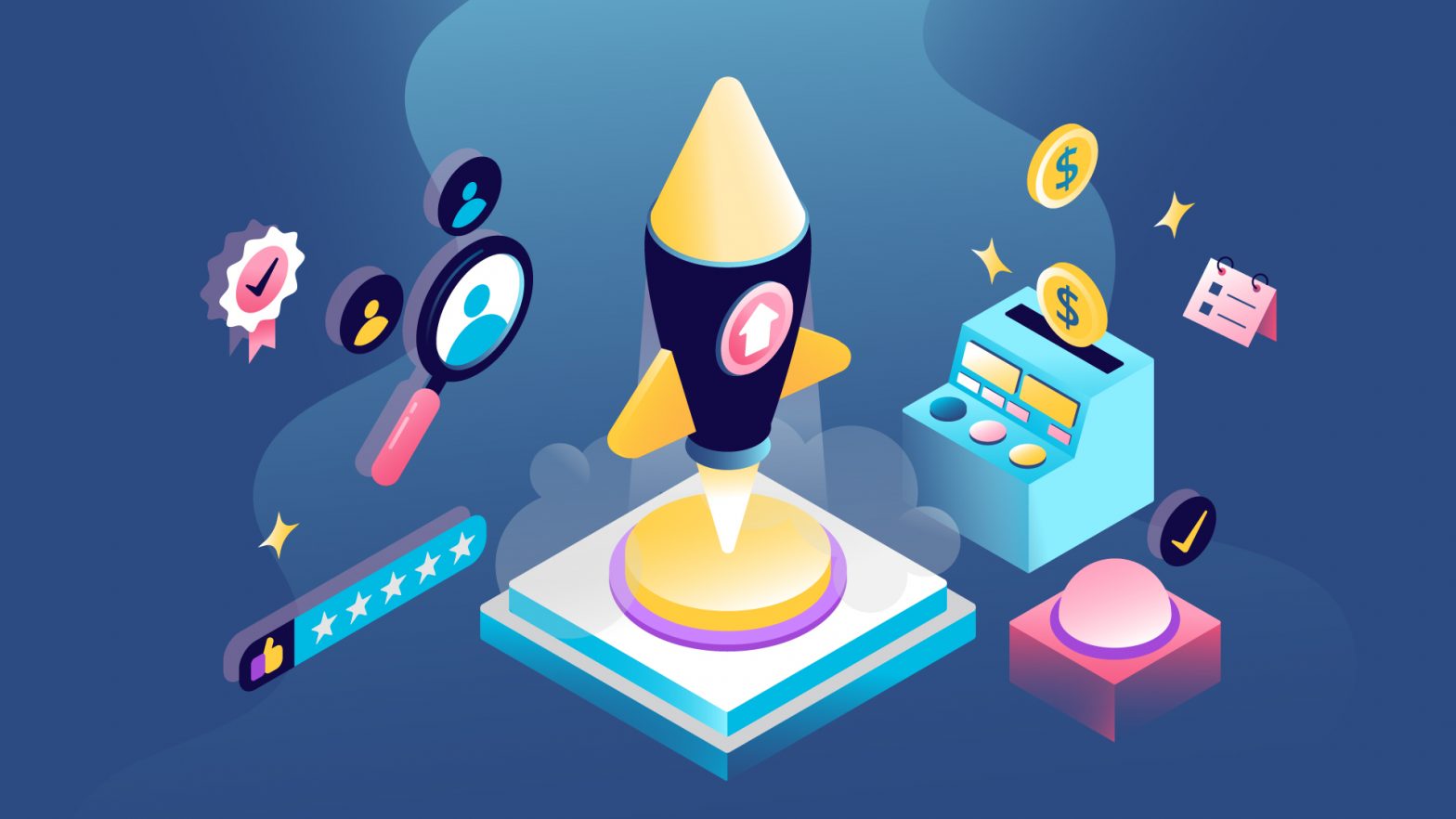Visuals landing pages: there are dozens of metrics you can track to measure whether your business website is helping you reach your business goals. However, the one KPI that says a lot about whether you’re on track or losing precious opportunities is the conversion rate on your landing pages.
According to data, the average landing page conversion falls at 4.1%. (Naturally, specific industries tend to convert better than others).
Source: unbounce.com
But here’s the deal. If only 4% of your landing page visits end in conversions, you’re not converting 96% of your leads.
The good news is that you can fix the situation with some well-planned design choices. And it turns out that visuals could be the secret weapon to boosting the performance of your landing pages (and your website in general).
So, if you’re ready to take advantage of the fact that humans respond best to visual information, these are the types of visuals your landing pages need to boost conversions.
1. Explainer Videos
Explainer videos are one of the best visual formats to include on your landing pages (and your website in general). Statistical data shows that:
- 73% of consumers prefer to watch a short video to learn about a product or service. For reference, text-based articles are the preference for 11% of people, infographics for 4%, ebooks and manuals for 3%, and webinars and sales calls for 3%.
- 96% of people have already interacted with explainer videos. And most importantly;
- 88% of consumers have been convinced to buy a product or service by watching a brand’s explainer video.
Of course, how you use explainers is entirely up to you and what works best for your brand and your target audience’s preferences.
For instance, SaaS businesses, such as Make, do particularly well with animated explainers as this format allows them to present complex and abstract concepts in a way that helps prospects comprehend the benefits these solutions offer.
On the other hand, companies that want to appeal to their audience’s emotions or address consumer pain points head-on do much better with explainer videos that have a social presence in them (or are humorous). It was precisely this type of explainer video that helped Dollar Shave Club break into a hugely competitive industry ten years ago.
2. Icons, Illustrations, Graphs & Charts
Another format that can help you significantly boost information comprehension, and product understanding, and, consequently, improve conversions on your landing pages are different types of data visualizations.
Visual cues can significantly improve learning, so why not take advantage of this on your website to encourage conversions?
Generally, how you employ visuals to present data in a more approachable format for your audience depends on the type of knowledge you’re trying to convey.
On the one hand, you can do something as simple as creating custom icons to represent different types of products. This is what Zoma does on their Mattress Sizes and Dimensions Guide landing page, knowing that simply listing various product dimensions won’t help prospects visualize them as efficiently as representing them visually.
On the other hand, you could utilize custom illustrations to create user-friendly how-it-works content and allow your audience to understand what they can expect from your solutions.
For instance, if you check out the Mindbody homepage, you’ll see how the brand employs illustrations of users, calendars, and different app features to make it easier for first-time web visitors to understand what the software does.
And in some cases, data visualization makes for the best knowledge delivery method, as it combines the power of text with the approachability of visually represented information.
For example, a quick look at the Owllabs State of Remote Work report shows how effectively this business conveys data, thanks to graphics. And the best part is that this is a visual format anyone can recreate and use, even without having to hire a professional designer.
3. Product Photos, Videos, Previews, & Screenshots
Landing pages need to load quickly to reduce customer bounce rate. When using images, these should be optimized to reduce file size while maintaining image quality. This can be done with a simple online image compressor.
Generally, landing pages present website visitors with content optimized to meet their search intent. That is, the purpose of landing pages is to give prospects information relevant to their current position in the customer journey.
With this in mind, it’s essential to understand that targetting consumers in the lower stages of the sales funnel necessitates using product previews in one format or another.
For e-commerce brands, the solution is straightforward. For this type of business, the best format of visuals to include on landing pages to inspire conversions are well-made product photos.
For some businesses, the best choice will be to utilize an entire collection of product photos, like that on the MannequinMall Sports Mannequins page, which shows prospects how versatile the brand’s offer is.
But other brands will do better with a bit more context — especially if they’re selling lifestyle products and services. This is what Lookiero does on its homepage. See how it displays a staged photo of how its services work and, more importantly, how it uses social presence to achieve an emotional impact.
For SaaS, the best type of visual to help present your product will be screenshots and screengrabs.
In the example below, PandaDoc adds this format to its homepage, giving prospects a valuable preview that informs them of what they can expect from the product. It starts the onboarding process (by educating them about how the software works) even before web visitors have decided to convert.
Of course, if this type of product representation doesn’t work for your brand’s needs, you can go with a more direct “Before/After” approach. This is what you’ll find on the PresetLove website. Although simplistic, this form of visual is guaranteed to inspire conversions simply by showing prospects the effects they could achieve by investing in your solutions.
Finally, don’t forget that you can also present your solutions in video format. If you decide to go this route, you’ll discover that it is particularly beneficial for showing your audience the full potential of your offer, which could be hard to explain in words alone. Check out how it’s done on the LastPass website.
4. User-Generated Content
One commonly underutilized format that could help your turn landing pages into conversion-driving powerhouses is UGC.
According to research, consumers consider user-generated content the most authentic type of content brands can use. The TINT State of User Generated Content report found that 72% of people think reviews and testimonials (the most commonly used type of UGC) are more credible than brands talking about their products.
So, if you want to employ visuals that are guaranteed to drive customer trust and, consequently, conversions, don’t hesitate to source and display UGC.
One piece of advice you should adhere to if this is what you decide to do is to guarantee that the user-submitted images you highlight come off as authentic and relevant, like the social media posts shown on the Hello Fresh website.
5. Negative Space
Last but not least, if you’re experimenting with visual formats that could boost the conversion rates on your landing pages, don’t forget that, in some cases, doing less equals achieving more.
More specifically, we’re referring to the use of negative space when designing any part of your website, which is essential if you want to allow high-value, conversion-driving elements to stand out.
By ensuring that CTA buttons, unique value propositions, product photos, and solution benefits are given at least a little bit of “breathing space,” you’ll significantly improve their chances of grabbing your audience’s attention. And remember, the outcome of highly-engaging web design is always a higher chance of convincing prospects to invest in your solutions.
In Closing
The type of visuals you choose to display on your website and especially your landing pages (often the first touch point your prospects will interact with), depends on several factors. These include your brand’s target audience, the solution you offer, and the brand image you’re trying to create.
But, no matter your ultimate goals, it’s safe to say that paying attention to landing page visuals helps optimize the site performance.
Not just in terms of presenting your products in a positive light and positioning your business as trustworthy and competent. But also in terms of encouraging web visitors to engage with the content on your site and, ultimately, turn into customers of your business.








